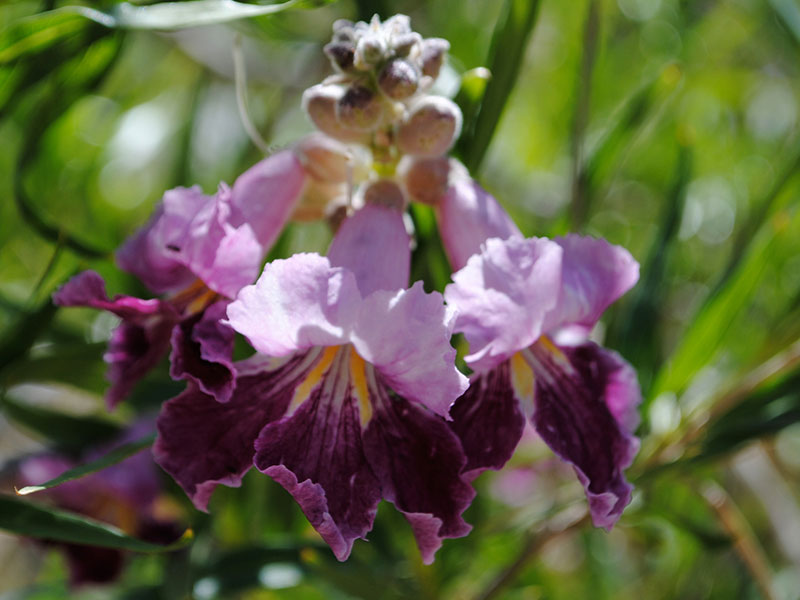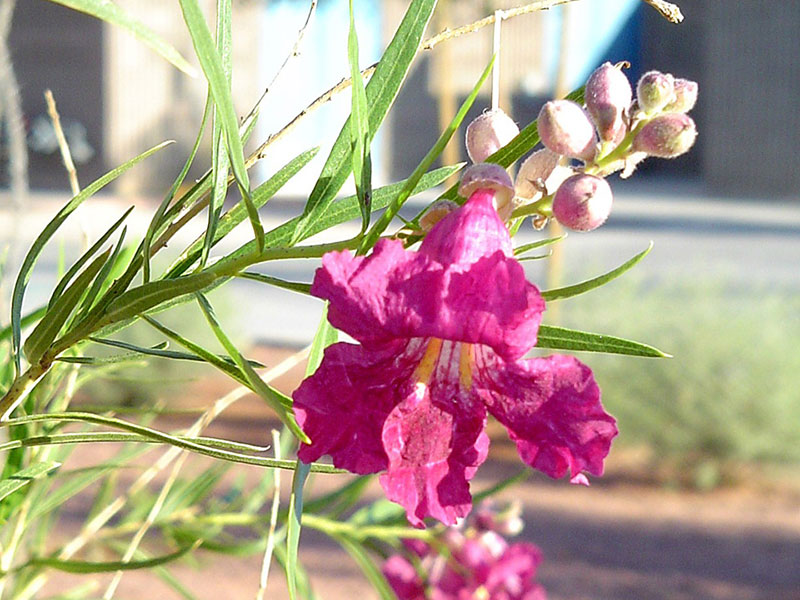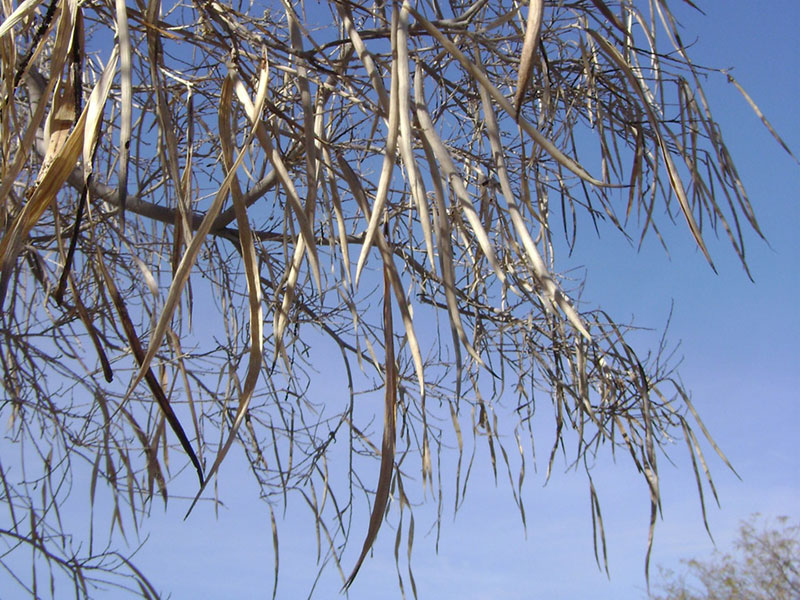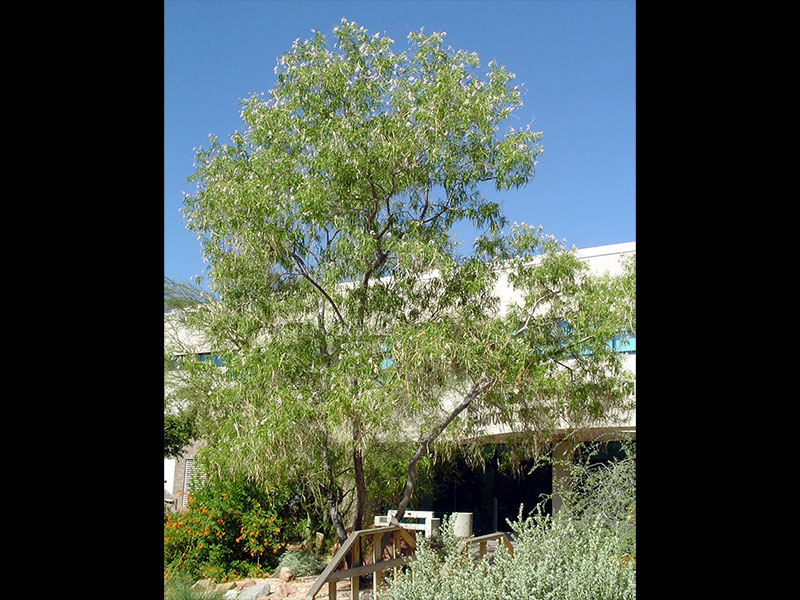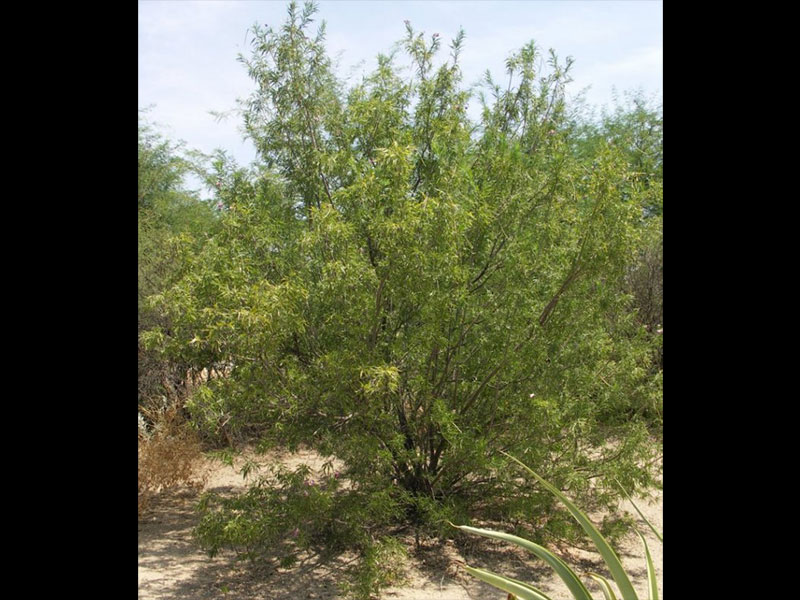Find plants
My list (0)
Desert Willow
Chilopsis linearis
Qualifies for Tree Enhancement Program
Climate ResiliencyOne of our native trees. Naturally multi-trunked with an open crown, but can be trained into a single trunk. Narrow, 2 to 4 inch long, medium to bright green leaves give this tree a slightly weeping appearance. Clusters of fragrant, funnel-shaped flowers with ruffled upper and lower 'lips' grace the ends of the branches. The flower color of the native Desert Willow is most commonly a pale pink with darker markings on the lower 'lip' and a yellow and white inner throat. There are many cultivars available with flower colors in varying shades of white, pink, red and purple, including: 'Desert Hope', 'Warren Jones', 'AZT Bi-color', 'AZT Desert Amethyst', 'Lucretia Hamilton', etc. Seed pods break open then turn papery and persist throughout the winter. Gives a somewhat unkempt look in winter. Some cultivars also have reduced seed production. Volunteers in the landscape. Needs deep, infrequent watering. Prune for shape, especially if trying to form a single trunk. Do not top, this shortens the life of the tree.
- Plant type: Tree, Native
- Maintenance level: Medium, Low
- Water requirement: Low
- Sun exposure: Full, Part Sun, Reflected Heat
- Height range: 20–30 Feet
- Width range: 18–22 Feet
- Canopy value: 236 ft²
- Growth rate: Medium
- Seasonal habit: Deciduous
- Flower color: Pink, Purple, Yellow, White, Red
- Flower season: Spring, Summer, Autumn
- Fruit color: Green, Brown
- Fruit season: Autumn, Winter
- General foliage color: Green
- Design style: Pollinator Plants
- Hardiness cold tolerance: 10 °F
- Soil preference: Sand, Clay, Loam, Rocky, Well Drained, Dry
- Native location: Southwestern U. S. and Mexico.
- PH preference: Alkaline/Basic
- Sunset zones: 3, 7, 8, 9, 10, 11, 12, 13, 14, 18, 19, 20, 21, 22, 23
- USDA hardiness zone: 8a, 8b, 9a, 9b, 10a, 10b
New Search
